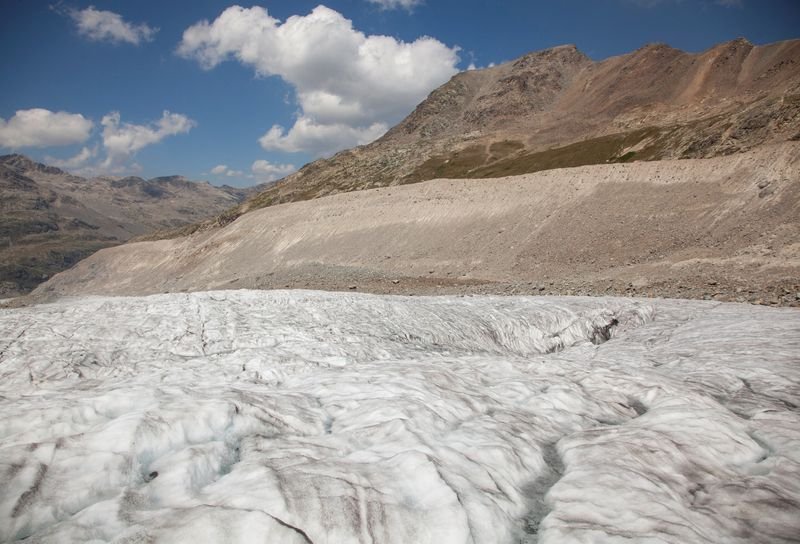From the way 45-year-old Swiss glaciologist Andreas Linsbauer moves through the ice crevasses, you’d never guess he was carrying the 10 kilogrammes of steel equipment needed to map the retreat of Switzerland’s glaciers. They usually head this way to the large Morteratsch glacier at the end of September, at the end of summertime in the Alps. However, this year’s extremely high ice loss brought him to this 5.8-square-mile ice amphitheatre two months early for emergency maintenance work.
The gauge posts he uses to track changes in pack depth are in danger of coming loose as the ice melts and he has to drill new holes. Glaciers in the Alps are on track for their biggest mass loss in at least 60 years of record keeping, data shared exclusively with Reuters shows. By looking at the difference between how much snow falls in the winter and how much ice melts in the summer, scientists can measure how much the glacier shrinks each year. Since last year’s winter, which brought relatively little snow, the Alps have experienced two major heatwaves in early summer, including one in July that saw temperatures around 30 degrees Celsius (86 Fahrenheit) in the Swiss mountain village of Zermatt.
During this heat wave, the height where water freezes was measured at a record high of 5,184 metres (17,000 ft) higher than Mont Blanc—compared to normal summer levels of between 3,000 and 3,500 metres (9,800–11,500 ft). “It’s absolutely clear that this is extreme weather,” Linsbauer said, shouting over the roar of flowing meltwater as he examined the length of the pole sticking out of the ice. Most of the world’s mountain glaciers—remainders of the last ice age—are retreating due to climate change. But those in the European Alps are particularly vulnerable because they are smaller and have less ice cover.
Meanwhile, temperatures in the Alps are warming by about 0.3 °C per decade – about twice as fast as the global average. If greenhouse gas emissions continue to rise, Alpine glaciers are expected to lose more than 80% of their current mass by 2100. Even with emission measures taken today, much will be lost through global warming due to previous emissions. The 2019 report of the United Nations Intergovernmental Panel on Climate Change Morteratsch has changed from the glacier depicted on tourist maps of the region. The long tongue that once reached the deep valley below retreated nearly 3 kilometres (2 mi) while the depth of snow and ice thinned to 200 metres (656 ft). Up until 2017, the parallel Press Glacier ran through it, but it has now retreated, leaving a widening belt of gravel between them.


